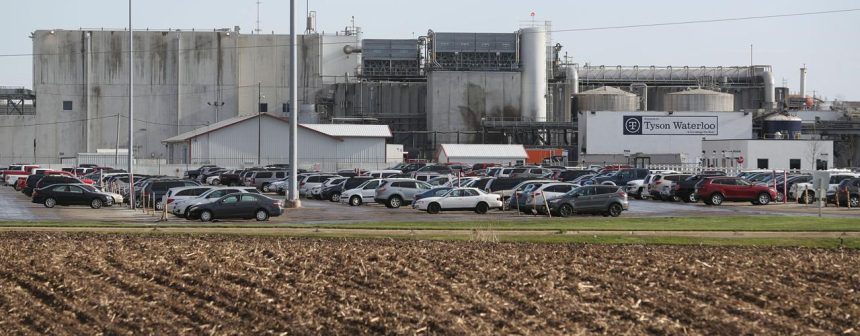A report from the Union of Concerned Scientists reveals that Tyson Foods discharged approximately 371.7 million pounds of pollution into U.S. waterways between 2018 and 2022. This is the first time the company’s individual environmental impact has been analyzed. The pollution includes various substances like nitrogen, phosphorus, and other metals, which can harm aquatic life when present in excessive amounts. The study aims to raise awareness among consumers about the environmental consequences of large food companies’ practices.
The comprehensive analysis conducted by the Union of Concerned Scientists sheds light on the significant environmental impact of Tyson Foods, a major player in the meat processing industry. By examining publicly available data on pollutant discharges from Tyson’s plants, the study reveals that the company released a staggering 371.7 million pounds of pollution into U.S. waterways between 2018 and 2022. This is the first time an in-depth examination of Tyson Foods’ individual environmental footprint has been conducted, and it aims to help consumers understand the far-reaching effects of such corporations on the environment.
The study identifies 30 different pollutants released by Tyson’s facilities, including chloride, nitrogen, phosphorus, and several other metals. Among the pollutants, nitrogen accounted for 34.2 million pounds, and phosphorus accounted for 5.1 million pounds. Both nitrogen and phosphorus can have detrimental effects on aquatic life when present in excessive amounts, disrupting the balance of plant and animal life in waterways.
As a company with deep market penetration, Tyson Foods’ products are often found in supermarkets and fast-food chains, making it challenging for consumers to avoid their offerings. Omanjana Goswami, one of the study’s authors, emphasizes that understanding the environmental impact of major food companies is crucial for making informed choices as a consumer. By raising awareness about the consequences of such corporations’ practices, the study encourages consumers to consider the environmental implications of their food choices and potentially drive change within the industry.
Moreover, the bulk of pollutants emitted by Tyson over the five-year period examined were concentrated in the Midwestern states of Nebraska, Illinois, and Missouri, according to Goswami. This region already contends with excessive nitrogen and phosphorus runoff from agricultural activities.
Goswami highlighted, “A significant portion of the pollution is centered around the Mississippi River Basin.” She explained, “Ultimately, much of this pollution flows into the Mississippi River, which then empties into the Gulf of Mexico, contributing to the formation of a massive hypoxic dead zone.”
The Gulf of Mexico’s dead zone has persisted as an issue for decades. Kelly McGinnis, executive director of the Mississippi River Network, noted that the surplus of nutrients can deplete oxygen levels, endangering aquatic life. “Fish and other mobile organisms can often escape,” she remarked, “but shrimp and other invertebrates frequently cannot.”





